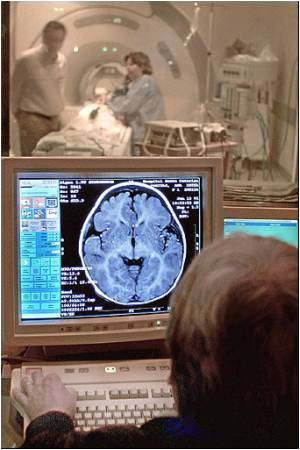In a landmark achievement, an online atlas of an ultra-high-resolution mouse brain offers the most detailed magnetic resonance images ever obtained of a mammalian brain.

"The atlas images, however, are more than 300,000 times higher resolution than an MRI scan, with voxels that are 20 micrometers on a side," said G. Allan Johnson of the Duke Centre for In Vivo Microscopy.he interactive images in the atlas will allow researchers worldwide to evaluate the brain from all angles and assess and share their mouse studies against this reference brain in genetics, toxicology and drug discovery.
The atlas used three different magnetic resonance microscopy protocols of the intact brain followed by conventional histology to highlight different structures in the reference brain.
The brains were scanned using an MR system operating at a magnetic field more than 6 times higher than is routinely used in the clinic.
The images were acquired on fixed tissues, with the brain in the cranium to avoid the distortion that occurs when tissues are thinly sliced for conventional histology.
The new Waxholm Space brain can be digitally sliced from any plane or angle, so that researchers can precisely visualize any regions in the brain, along any axis without loss of spatial resolution.
Advertisement
It eliminates the Humpty Dumpty problem that researchers used to face when they made 3-D measurements of brain structures," said Johnson.
Advertisement
"It would be interesting to see if the amygdala, (a brain center related to emotional arousal), is really smaller or larger in the animal.
"However, if you do conventional histology, the animal brain shrinks when it is dried or prepared in alcohol, sometimes by about 40 percent. Because of variability, that would make it challenging to measure. This atlas provides a reference to measure against," he said.
The details of the creation were published in the NeuroImage journal.
Source-ANI













